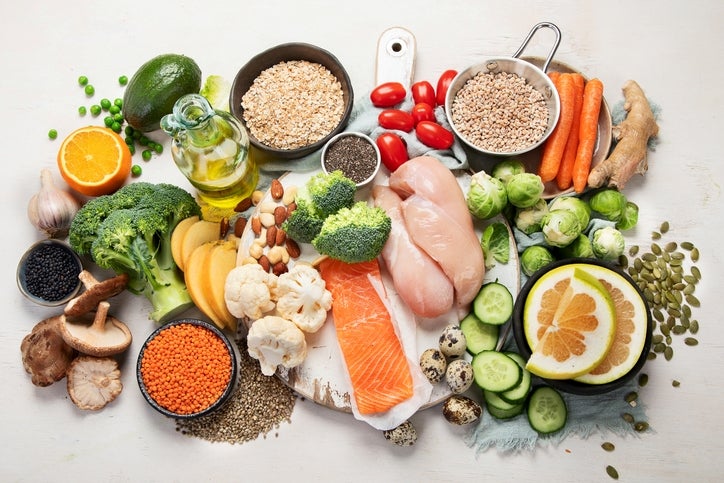Are You Getting Enough Protein? Age-Specific Guidelines and Meal Ideas
April 17, 2025
Plant-based protein options and meal ideas in the article provided by Rachel Strodel, MS, RDN and Kelly Wilson, MS, RDN, DipACLM from Lifestyle Medicine.
Why do we need protein?
Protein is one of the three macronutrients and has several roles that are essential for overall health. Protein builds our muscles and skin. It supports our immune system and helps keep our blood sugar stable.
Childhood & Adolescence
How much protein do kids need daily?
“Protein needs and requirements are measured based on nitrogen balance in our bodies, therefore, it is mostly an estimate and changes with age” said Dr. Sheila Wang, Pediatrics.
“It is influenced by physical activity level as muscle protein breaks down and gets recycled and reused.”
The typical goal ranges from 0.85 to 1.2 grams/kg a day.
What happens if kids don’t get enough protein?
“Protein malnutrition can result in symptoms of fatigue, poor concentration, slowed growth and low immunity,” said Dr. Wang.
Kid-Approved, High-Protein Snacks and Meals
Looking for easy, tasty ways to help your kids get more protein throughout the day? Here are some fun and healthy ideas that include both plant-based and animal-based protein sources your family will love.
Young Adults (20s-30s)
Your 20s and 30s are a crucial time to build healthy eating habits that support energy, muscle maintenance, and long-term wellness. Whether you're juggling work, school, parenting, or all three, getting enough high-quality protein helps fuel your busy lifestyle.
How much do you need?
Aim for about 0.8–1.0 grams of protein per kilogram of body weight each day (or roughly 50–70 grams for the average adult), adjusting higher if you're very active or strength training regularly.
Middle Age (40s-50s)
Are there specific protein sources that support hormonal health?
For overall health, it is best to consume protein from whole food sources. These include tofu, tempeh, nuts, seeds, legumes, quinoa or lean animal proteins (fish, poultry).
Adults in this age group typically need about 0.8 to 1.0 grams of protein per kilogram of body weight per day, depending on activity level and overall health. For example, a 150-pound (68 kg) adult should aim for 55–68 grams of protein daily.
Older Adults (60+)
What are easy-to-digest protein sources for seniors?
As we age, our muscles become less efficient in utilizing protein. Older adults require a higher protein intake to reduce the risk of frailty and maintain muscle mass and physical function. Older adults can meet their protein needs by eating a variety of protein containing foods such as eggs, low-fat dairy, tofu, tempeh, beans, lentils and nuts/seeds. Plant-based proteins have the added benefit of containing protective phytonutrients and fiber – a nutrient that is often low in most adults’ diets. Meats like chicken and turkey are a good lean, high protein option. As we age, our muscles become less efficient in utilizing protein.
A general recommendation is 1.0 to 1.2 grams of protein per kilogram of body weight per day, which translates to about 68–82 grams daily for someone weighing 150 pounds.
Plant-based proteins have the added benefit of containing protective phytonutrients and fiber – a nutrient that is often low in most adults’ diets. Meats like chicken and turkey are a good lean, high protein option.
Sources of Protein for Every Age
Plant-Based Sources
Animal-Based Sources
For more meal ideas, check out this free monthly cooking class.
Whole food sources vs. supplements
Whole food proteins are the best source of protein. In addition to protein, they provide essential vitamins and minerals (zinc, magnesium, iron, B vitamins, omega-3s) needed for optimal health. While most people can meet their protein needs from whole foods, protein supplements may be useful during recovery or times of low appetite.
Choose products with third-party testing certifications like NSF or USP. Avoid those with added sugars, fillers, or artificial ingredients.
How to get enough protein in a day
Protein needs vary by age, gender, activity level and overall wellness status. Most people in the United States, consume more than double the recommended amount. It may surprise you to learn that protein isn’t just found in animal foods, almost all plant foods also contain protein. By eating a wide variety of whole foods, you can easily achieve your daily protein intake.



